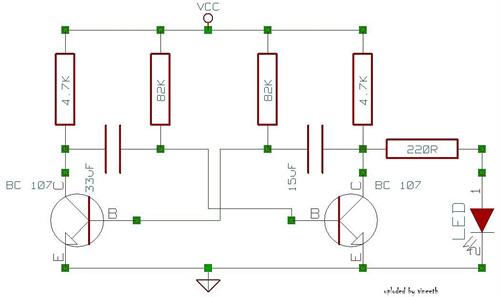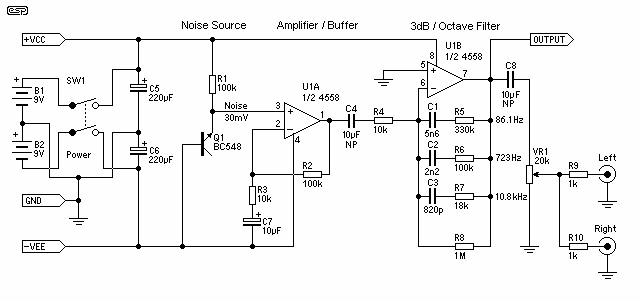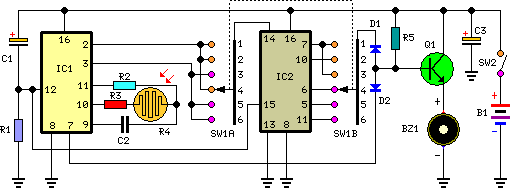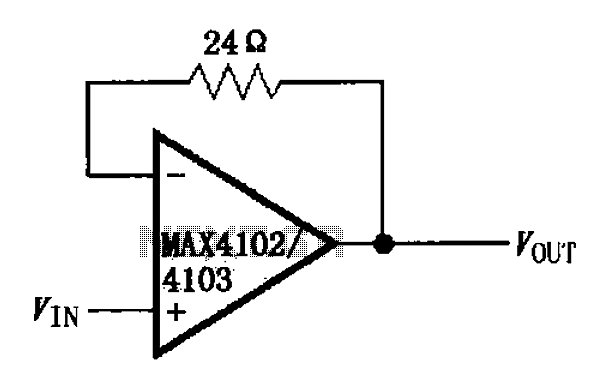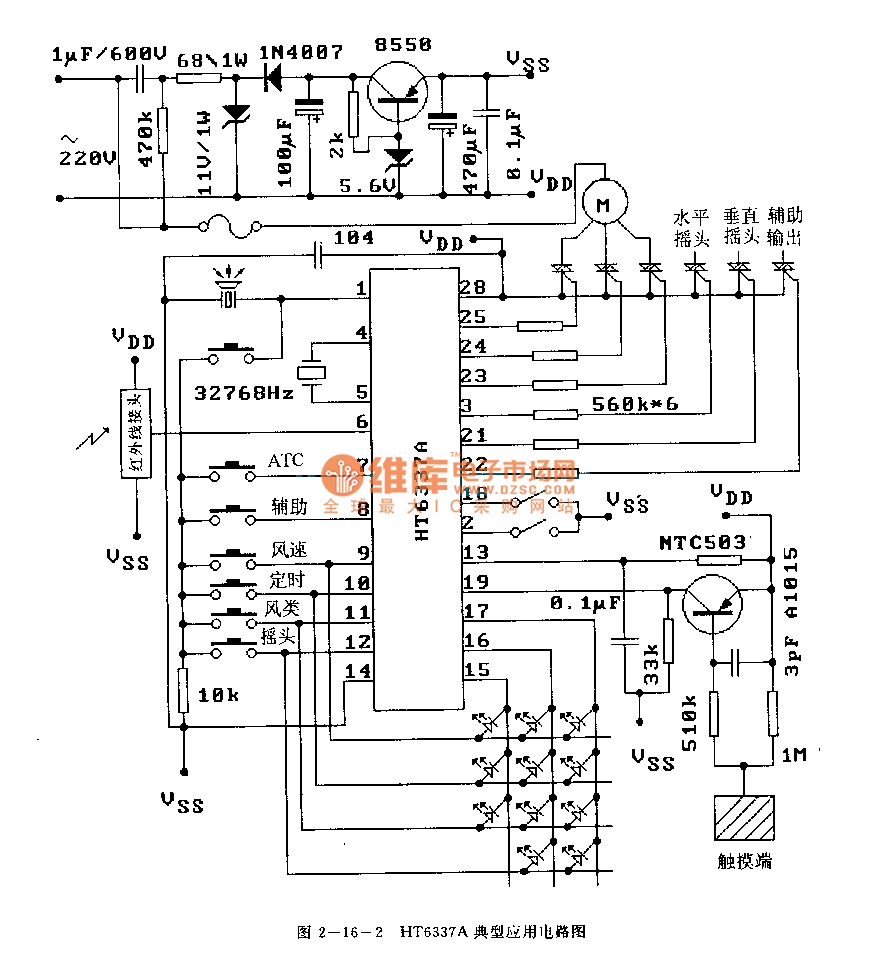
Audio AD converter circuit configuration
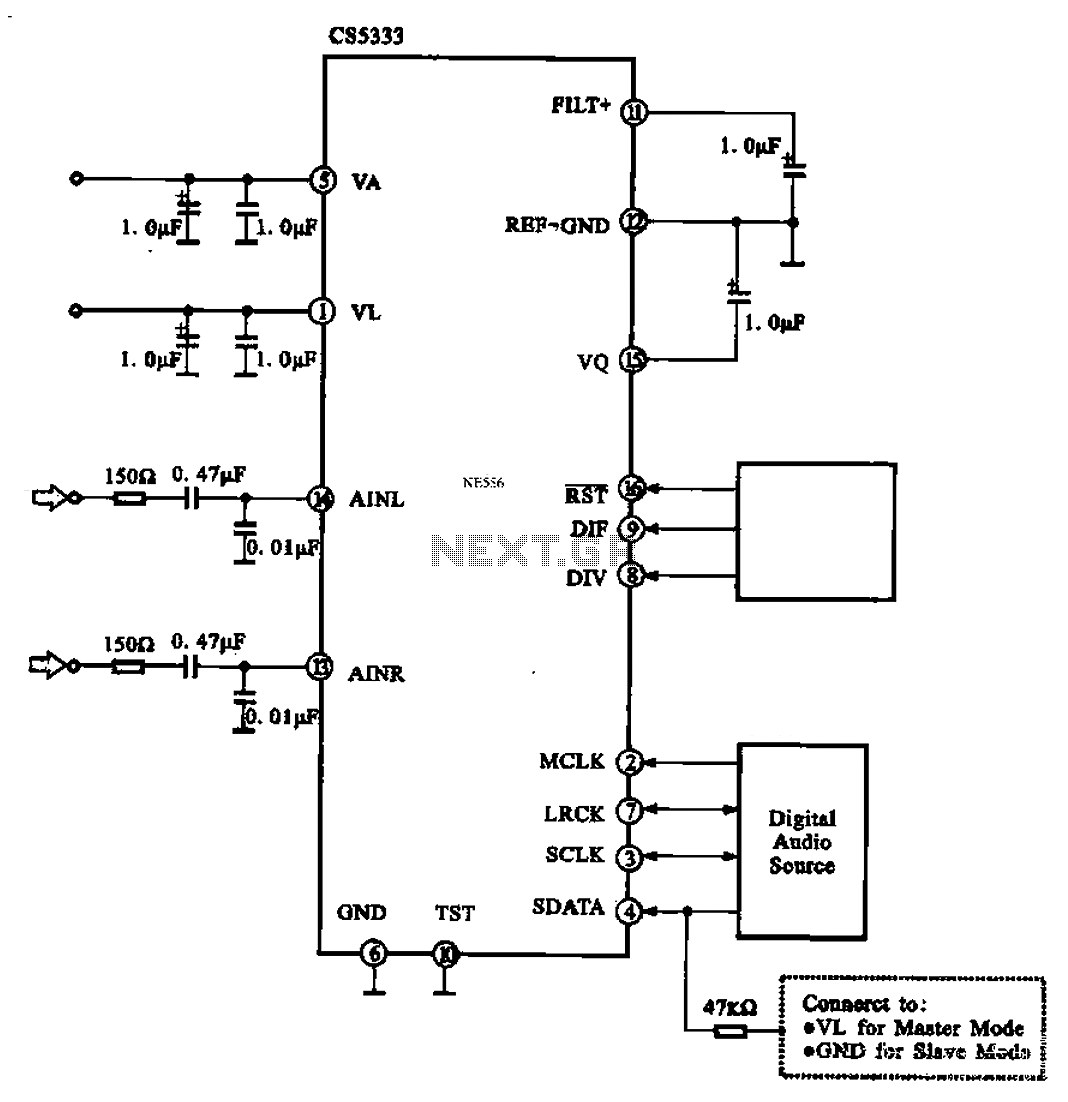
Audio A/D converter circuit configuration using the CS5333 chip, which is a high-performance 24-bit, 96 kHz stereo A/D converter commonly used in digital products. This circuit converts one or more audio signals into a digital signal for processing and storage.
The CS5333 chip is designed to provide high-quality audio conversion, making it suitable for various applications including professional audio equipment, consumer electronics, and digital signal processing systems. The chip supports a sampling rate of up to 96 kHz and features a 24-bit resolution, which ensures that the audio signal is captured with high fidelity.
The circuit configuration typically includes the CS5333 chip connected to an audio input source, such as a microphone or line-level audio signal. The audio signal is fed into the chip's analog input pins, where it undergoes analog-to-digital conversion. The CS5333 utilizes a delta-sigma modulation technique, which allows for accurate representation of the audio waveform by oversampling the input signal and performing noise shaping.
In addition to the input stage, the circuit may include additional components such as capacitors for filtering, resistors for biasing, and a power supply circuit to ensure stable operation of the A/D converter. The output of the CS5333 is a digital audio signal, which can be interfaced with digital signal processors (DSPs) or microcontrollers for further processing, storage, or transmission.
The circuit may also incorporate digital audio interface standards such as I2S (Inter-IC Sound) or PCM (Pulse Code Modulation) for seamless communication between the A/D converter and other digital components. Proper layout and grounding techniques are essential to minimize noise and ensure optimal performance of the audio A/D converter circuit. Audio A/D converter circuit configuration, the circuit CS5333 chip, which is a high-performance 24 bit 96 kHz stereo A/D converter, commonly used in digital products, a microph one or an audio signal into a digital signal processing and storage.
The CS5333 chip is designed to provide high-quality audio conversion, making it suitable for various applications including professional audio equipment, consumer electronics, and digital signal processing systems. The chip supports a sampling rate of up to 96 kHz and features a 24-bit resolution, which ensures that the audio signal is captured with high fidelity.
The circuit configuration typically includes the CS5333 chip connected to an audio input source, such as a microphone or line-level audio signal. The audio signal is fed into the chip's analog input pins, where it undergoes analog-to-digital conversion. The CS5333 utilizes a delta-sigma modulation technique, which allows for accurate representation of the audio waveform by oversampling the input signal and performing noise shaping.
In addition to the input stage, the circuit may include additional components such as capacitors for filtering, resistors for biasing, and a power supply circuit to ensure stable operation of the A/D converter. The output of the CS5333 is a digital audio signal, which can be interfaced with digital signal processors (DSPs) or microcontrollers for further processing, storage, or transmission.
The circuit may also incorporate digital audio interface standards such as I2S (Inter-IC Sound) or PCM (Pulse Code Modulation) for seamless communication between the A/D converter and other digital components. Proper layout and grounding techniques are essential to minimize noise and ensure optimal performance of the audio A/D converter circuit. Audio A/D converter circuit configuration, the circuit CS5333 chip, which is a high-performance 24 bit 96 kHz stereo A/D converter, commonly used in digital products, a microph one or an audio signal into a digital signal processing and storage.
